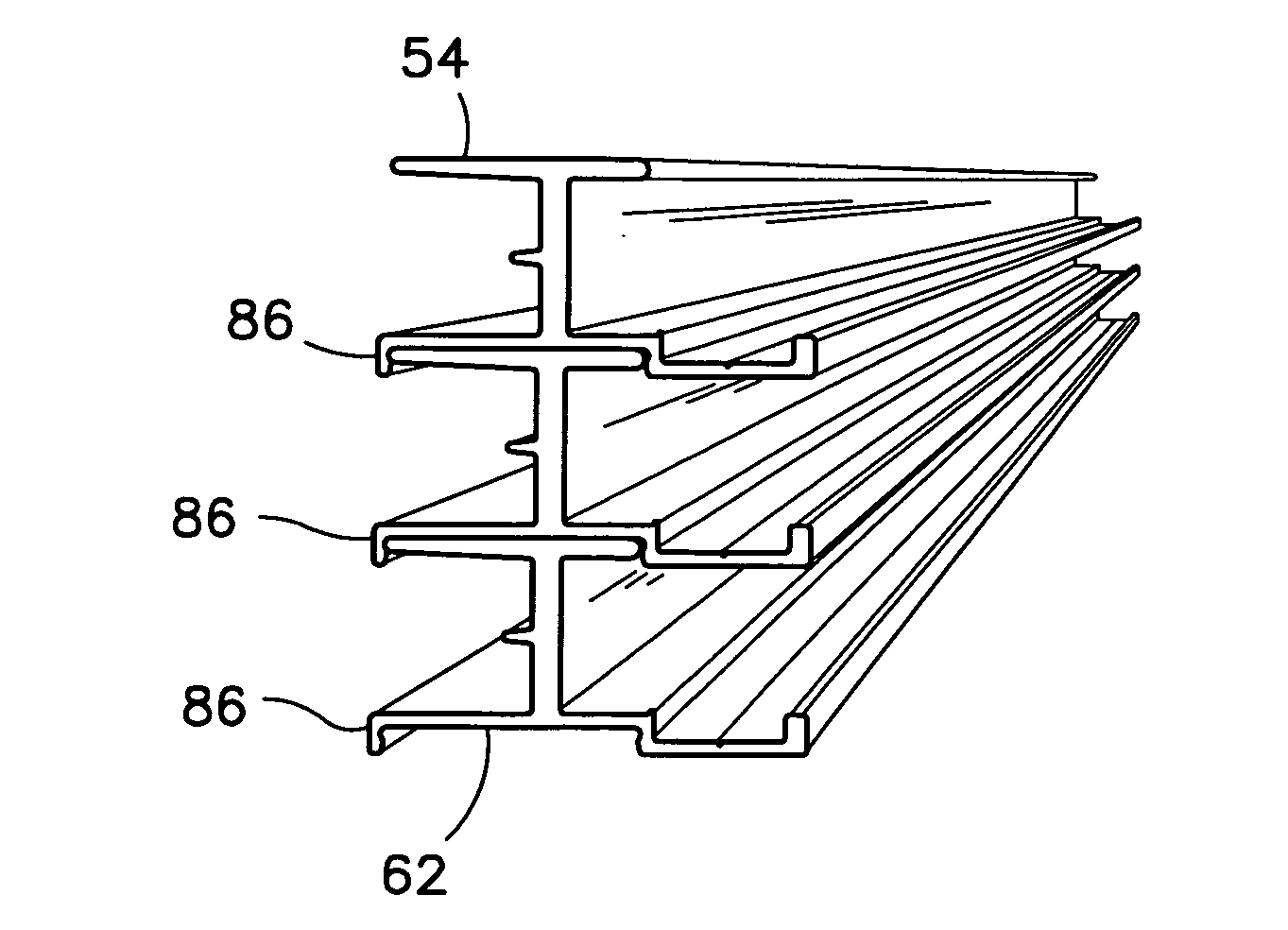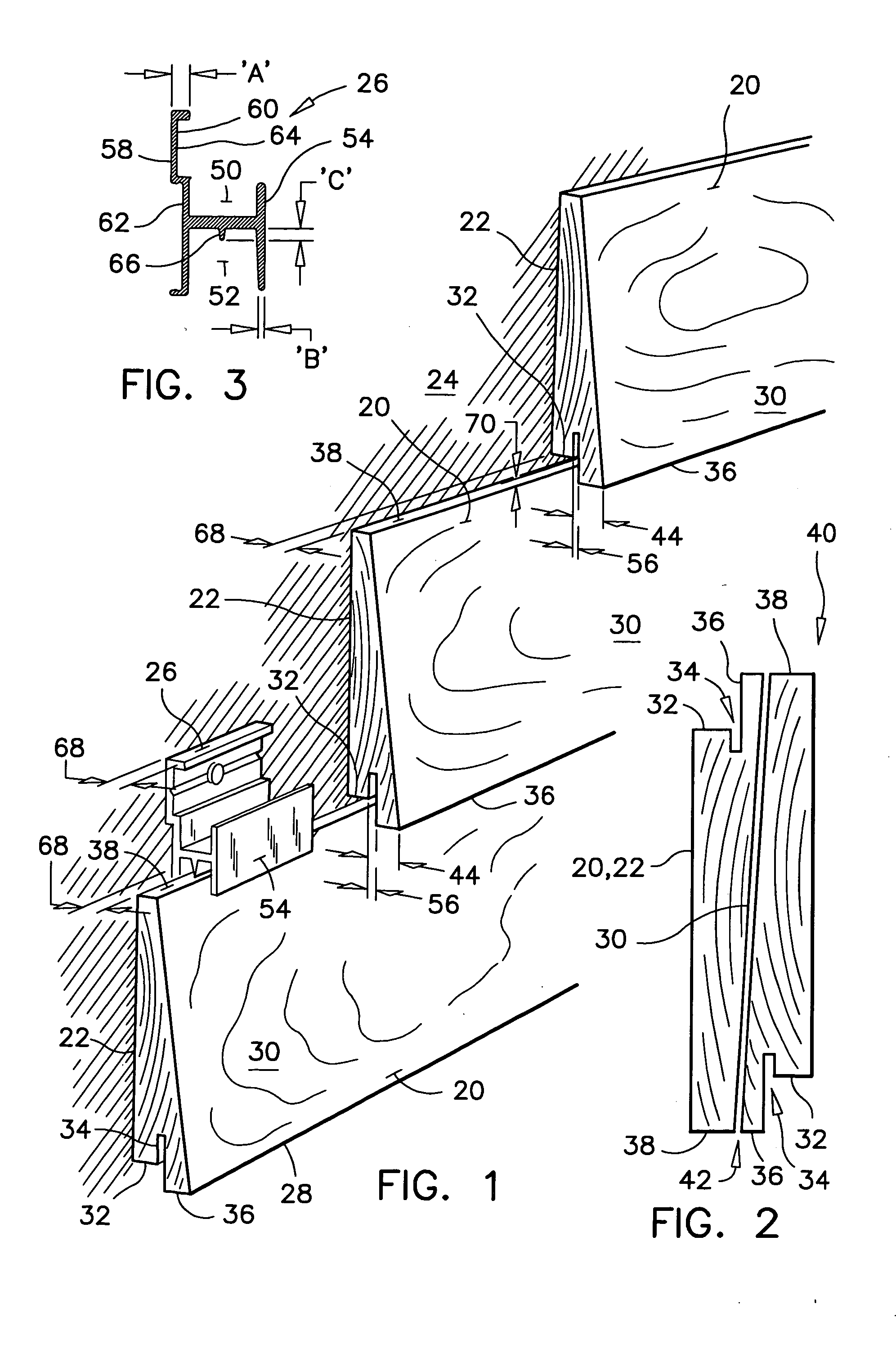Old-fashion clapboard-like wood siding system with ventilation gaps
- Summary
- Abstract
- Description
- Claims
- Application Information
AI Technical Summary
Benefits of technology
Problems solved by technology
Method used
Image
Examples
Embodiment Construction
[0051]The preferred embodiment of the wood siding system according to the present invention is described herein below with reference to the attached drawings.
[0052]Referring to FIG. 1, the overall arrangement of the preferred siding system is illustrated. The wood siding boards 20 have straight back surfaces 22 that are held in a coplanar arrangement with each other, parallel to the supporting structure 24. The wood siding boards 20 are held to the supporting structure 24 by spaced-apart metal retainers 26. The metal retainers 26 are preferably installed at intervals of 12 to 24 inches along the top edge of each wood siding board 20. A continuous length of metal retainer 26 (not shown) can also be used to support the bottom edge 28 of the lowermost wood siding board 20 on a wall.
[0053]Each wood siding board 20 has a tapering front surface 30 with a thicker lower edge. The lower edge has a shoulder 32, a slot 34 and an apron-like strip 36 formed thereon, on its front surface. The apr...
PUM
 Login to View More
Login to View More Abstract
Description
Claims
Application Information
 Login to View More
Login to View More - R&D
- Intellectual Property
- Life Sciences
- Materials
- Tech Scout
- Unparalleled Data Quality
- Higher Quality Content
- 60% Fewer Hallucinations
Browse by: Latest US Patents, China's latest patents, Technical Efficacy Thesaurus, Application Domain, Technology Topic, Popular Technical Reports.
© 2025 PatSnap. All rights reserved.Legal|Privacy policy|Modern Slavery Act Transparency Statement|Sitemap|About US| Contact US: help@patsnap.com



